Powerful visual stories about being next of kin
Published January 14th 2022
“Colleagues can also be next of kin. In 2020 artist colleagues of Brynhild Bye-Tiller became important next of kin.” Photo credit: © Brynhild Bye-Tiller
Written by:
Brynhild Bye-Tiller Trondheim
Related Story:
“I’m terrified of infecting someone else”
On June 26th 2021 an outdoor photo exhibition opened on the market square in Trondheim, Norway. Seven
women used the Covid-19 pandemic to learn mobile photography as part of an art project. Through 25 photographs, they raised questions about being next of kin for a family member or a partner.
“Life is an uncertain project for all of us. Sometimes other people need our support. The vast majority of us will be a next of kin during our lifetime. Being next of kin gives a good feeling of fulfilment and meaning, but it can
also present challenges and dilemmas”, says Lisbeth Lein, participant and partner in the project.
The first iteration of The Kintsugi Project was exhibited in Trondheim in summer 2021, with a second exhibition in Levanger and a third at Studio 44 in Stockholm.
– The participants has made a very powerful exhibition. They document realities of being next of kin and they share personal stories. Using their resources and not least their courage, to stand up and display their lives. Too
many for the very first time, says Brynhild Bye-Tiller the artist behind the project. Bye-Tiller has previously explored questions about gender, social injustice and immigration.
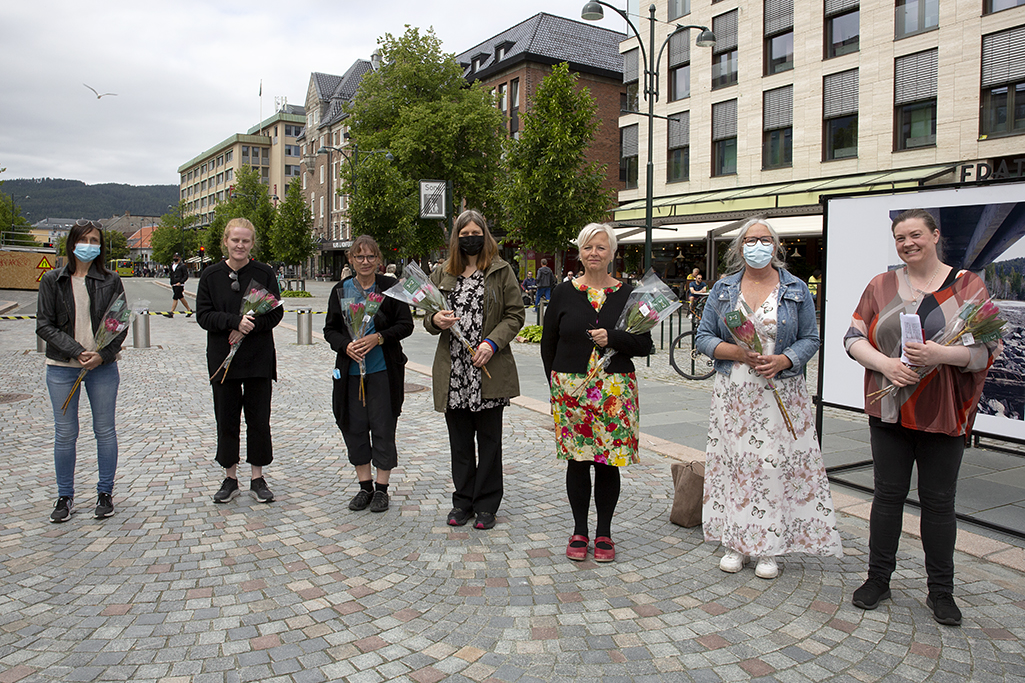
The participants at the exhibition opening in Trondheim, Norway. Credit: Brynhild Bye-Tiller
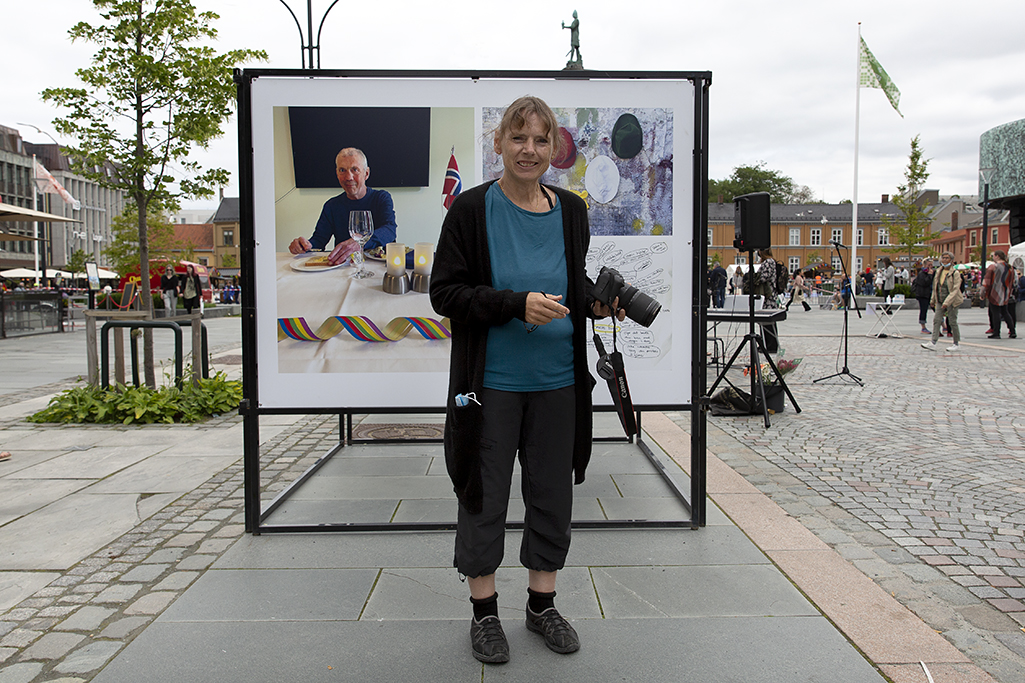
“During the pandemic it became much more difficult to be next of kin. Public services closed. I was lucky because I had a job. Slowly it became easier”,
says Ragni Naavik, photographer and participant. She gave us a 100% unfiltered insight into her life through four photographs. A life that changed after
her husband got Levy body dementia when he was 56 years old. Credit: Brynhild Bye-Tiller
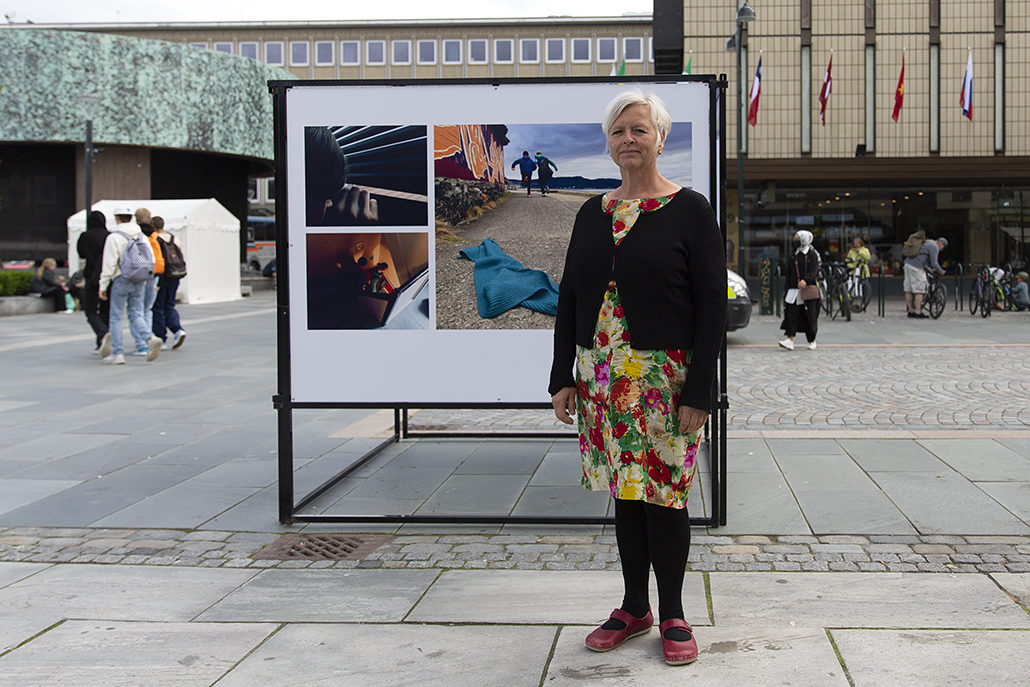
Lisbeth Lein staged a photographic essay about «Brothers». Lein managed to add a mystery to a well composed story. With open color-coordinated
images, the public could use their imagination to think of brothers, relationships and siblings as next of kin. Different camera angles, different sections
and different types of light, the essay was both informative and thought provoking. Credit: Brynhild Bye-Tiller
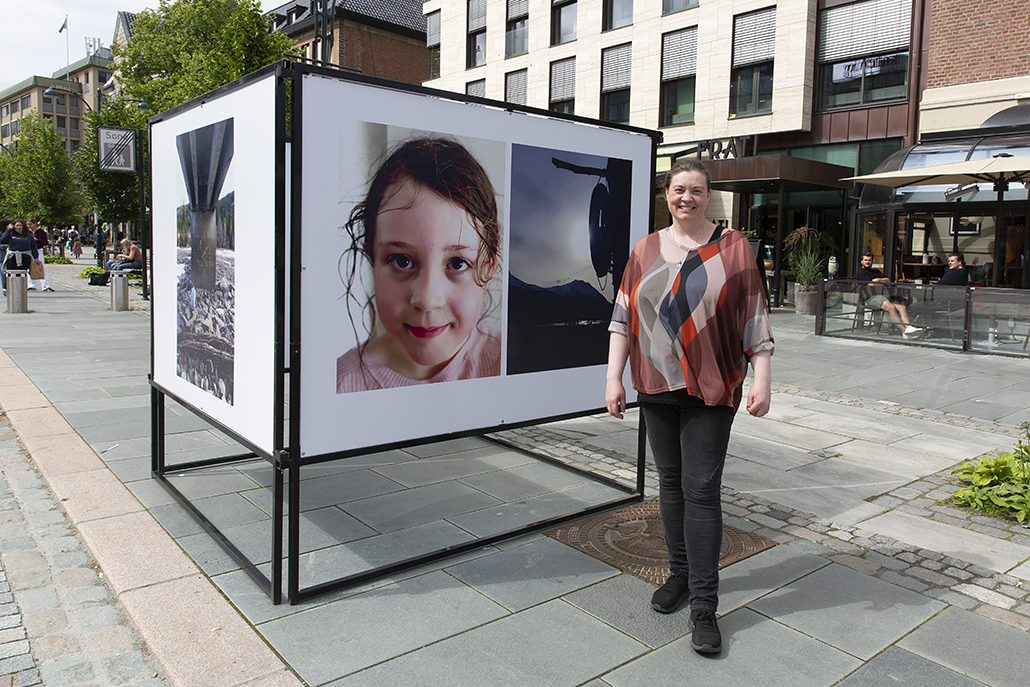
Tone Smistad asked can children be next of kin? By focusing on a young person Smistad challenged the traditional next of kin role. Credit: Brynhild Bye-Tiller
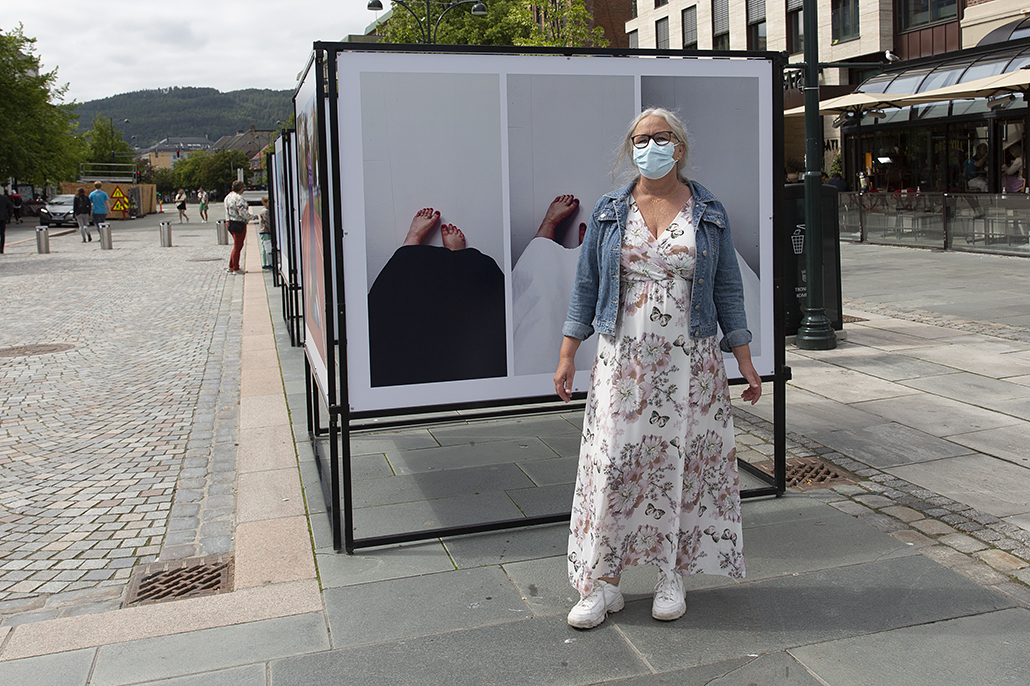
More than holiday feet on Instagram. A bare foot that tests the water temperature is a well-known holiday image. Hege Roksvåg Nygård photographed feet
but not at the water’s edge. She gave the audience room for reflection and asked in the title: “When do I stop being who I am?” Credit: Brynhild Bye-Tiller
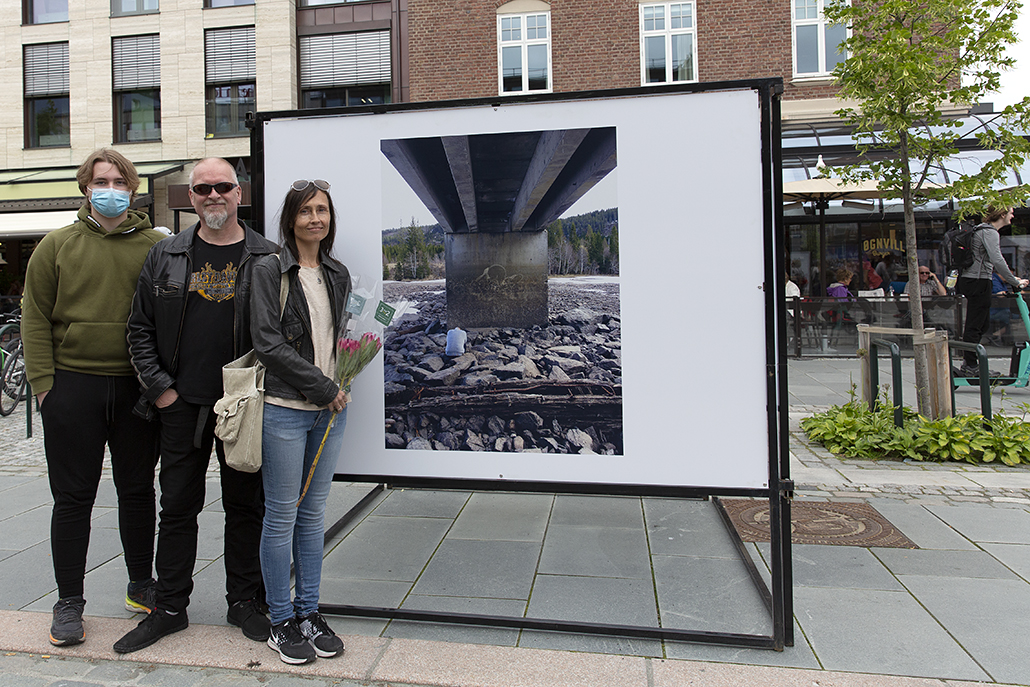
Renée C. Ræder participated with two verticals. The first was taken outdoors under a bridge. Its early spring. The river is drained. Remains of an old
wooden bridge can be seen in the foreground. In the middle spans aconcrete foundation and a monumental bridge. On a rock, on the ground under
the bridge, a man is sitting with his back to us and his head leaning forward. The pose left little doubt that this was someone who is struggling mentally.
Ræder staged a potentially dramatic situation using her husband as a model. Credit: Brynhild Bye-Tiller
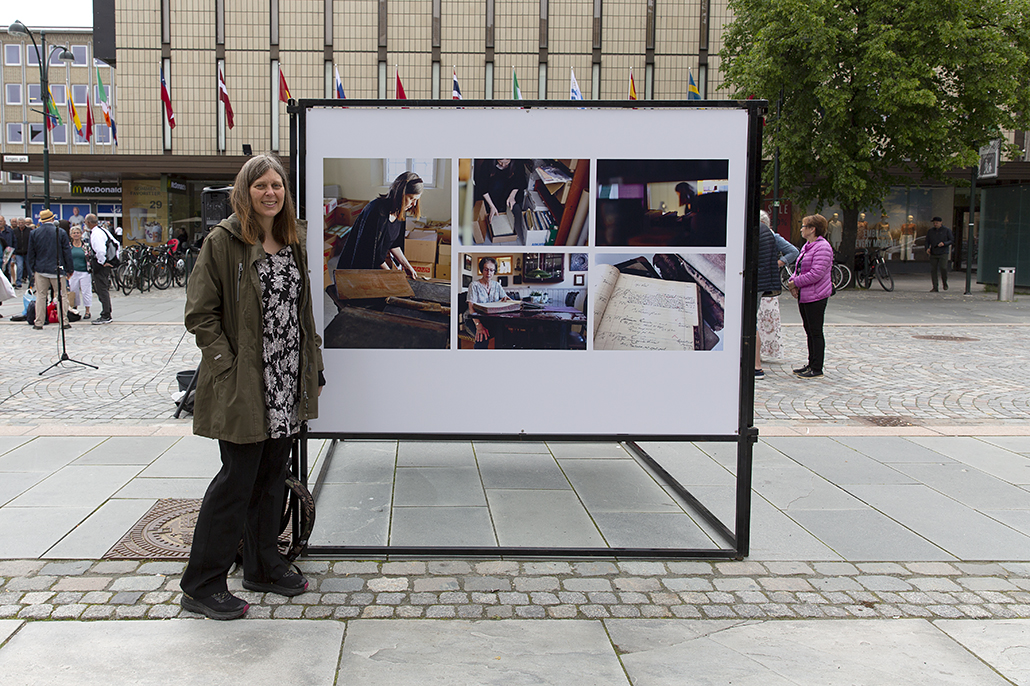
Alternative next of kin activities. Eva Furseth chose an analytical approach to the topic of being next of kin. She asked what does it mean to be a next of kin?
Is it more than sadness and nursing? You could see one of the answers in the photo series “Tracks” where she staged herself as an archivist. Credit: Brynhild Bye-Tiller
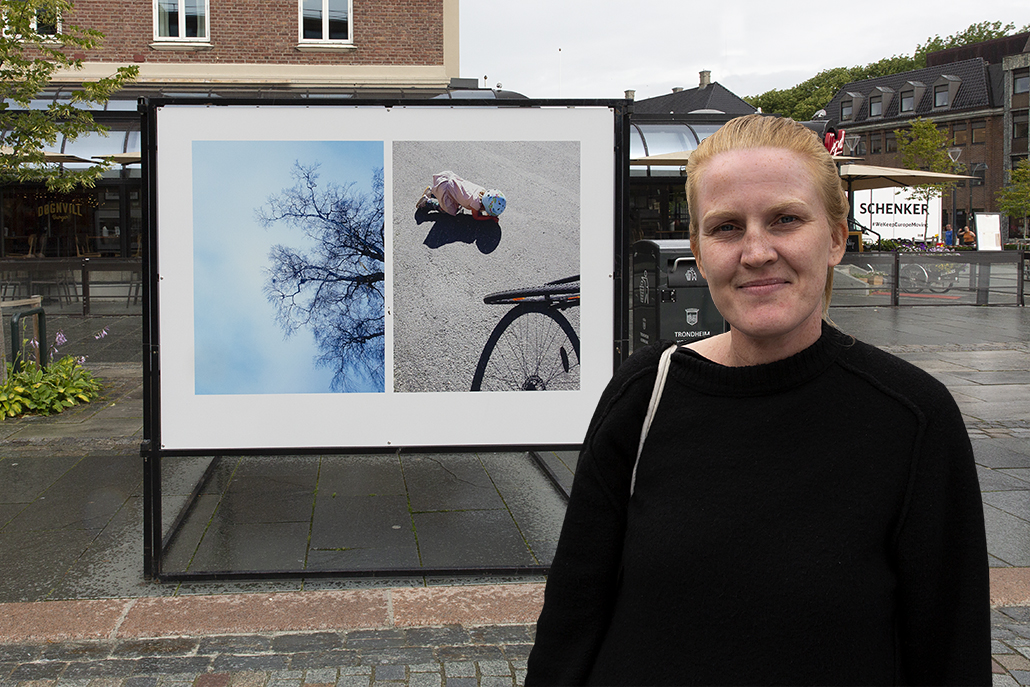
Observation and reflection. Anne Gro Gullvik Frøiland showed two partially abstract photographic observations. She made us aware of details in our
surroundings that few people stop and notice. Instead of telling a concrete story, Gullvik Frøiland’s pictures are open and gave the audience an
opportunity to read their own stories in the pictures. In this way, the pictures became a unique personal experience for each person who took the time
to see. Credit: Brynhild Bye-Tiller
Related Story:
Being next of kin – so much more than just family
The Kintsugi Project was an art project based on a photographic social art practice. The methods and the structure of the project made this clear. The project was developed by artist Brynhild Bye-Tiller in cooperation with For Prisoner’s next of kin (FFP), South-Trøndelag Red Cross and North-Trøndelag Red Cross by Network after serving time, Door Opener and Good Head/ABC and also LINK Trondheim.
The name Kintsugi comes from a japanese craft tradition, where one puts together the bits from a broken ceramic bowl with gold. To make it yet stronger and even more beautiful. The creative process in developing the exhibitions was repair work that dealt with both positive and negative aspects of kinship relations.
The Kintsugi Project was supported by Trøndelag County Council, Trondheim municipality and NBK Vederlagsfondet.
© 2021 Brynhild Bye-Tiller. All Rights Reserved.





